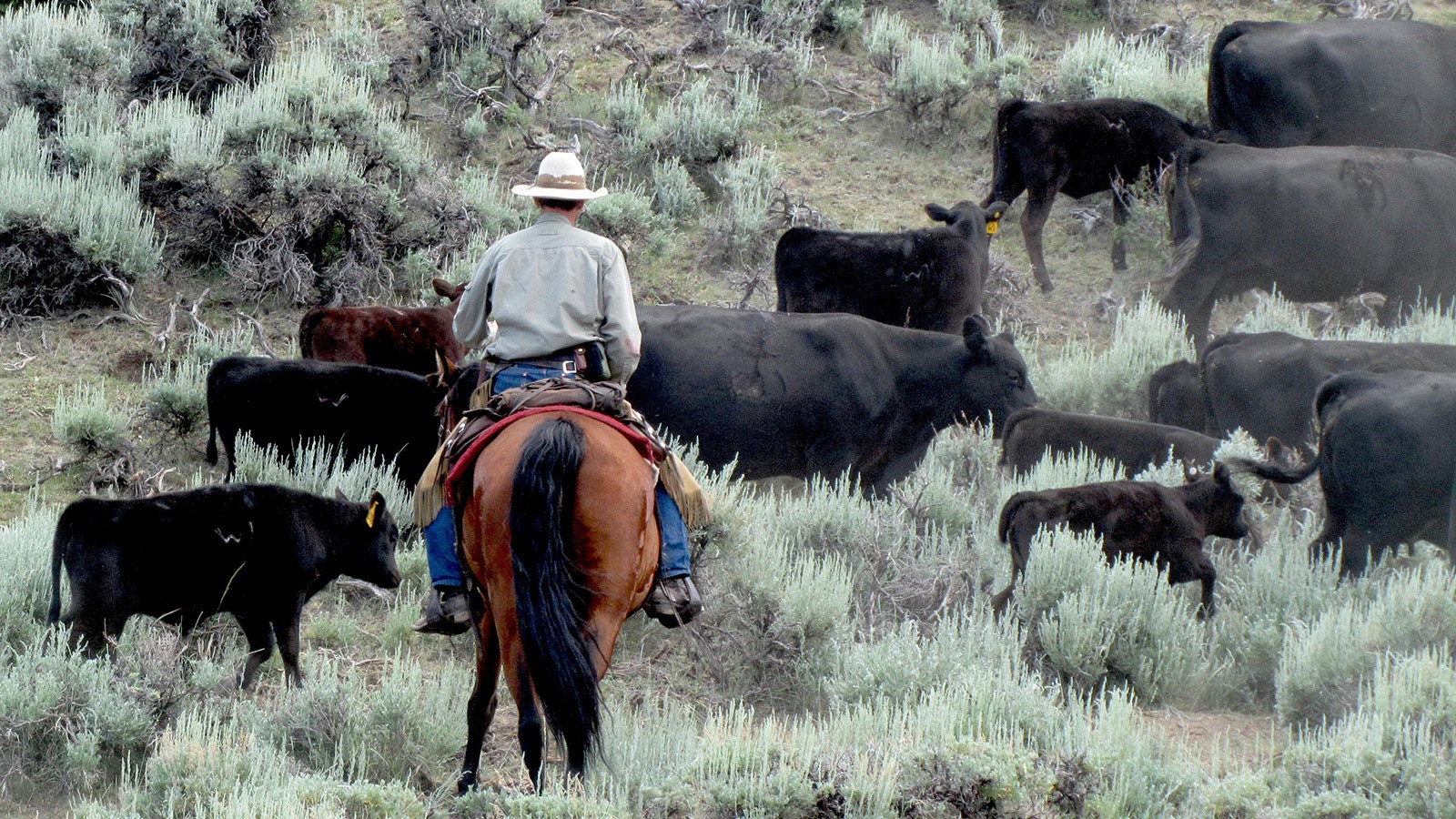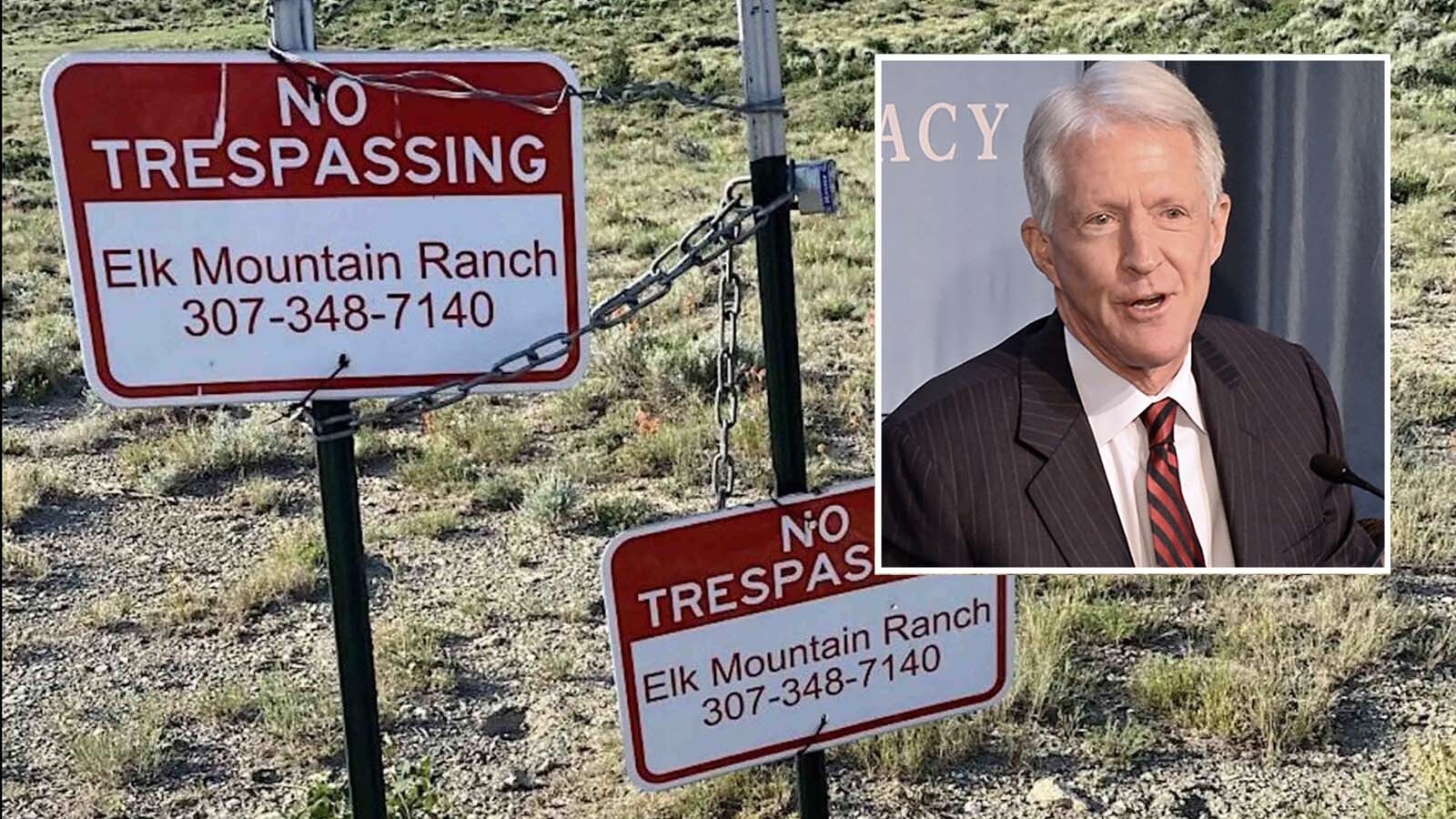The ultimate outcome of Colorado’s wolf reintroduction might be unclear, but it doesn’t have to be the disaster some have made it out to be, a conservationist told Cowboy State Daily.
“People are worried that wolves are going to kill elk, kill deer, kill cattle and kill sheep. And they’ll do all of that, those fears are not unfounded,” said Matt Barnes, a range scientist who has worked on wolf and grizzly bear conflict mitigation on ranches in Wyoming and Montana.
But those fears also are likely blown out of proportion, Barnes told Cowboy State Daily, adding that wolves are responsible for only a fraction of a percent of livestock deaths in the Northern Rockies.
And roughly three decades after wolves were reintroduced in Wyoming, Montana and Idaho, those states still have ample elk herds and hunting tag availability with overall elk hunting success rates not being affected, Barnes added.
So, Colorado’s wolf program can succeed, although it will take a wide range of management strategies – including sometimes killing wolves, said Barnes, who lives in Colorado and is a research associate with the Northern Rockies Conservation Cooperative.
He was also part of a stakeholder’s advisory group during the planning stages of Colorado’s controversial wolf reintroduction program.
Natural Migration Wouldn’t Have Worked
Colorado’s wolf reintroduction program was initiated by Proposition 114, which Colorado voters passed in 2020 by the slimmest of margins, 50.91% to 49.09%.
In December, Colorado Parks and Wildlife agents released 10 wolves at undisclosed remote locations in Grand and Summit counties in northern Colorado.
Some hailed the wolf reintroduction as a huge success, but others took a dimmer view.
In particular, some Wyoming ranchers near the Colorado border said they’re prepared to shoot any wolves that cross the state line. In that part of Wyoming, wolves are classified as a predatory species and may be killed on sight.
Wolves were already filtering into Colorado from Wyoming on their own, Barnes said.
“Physically, it’s possible for wolves to cross southwest Wyoming into Colorado. We know of about 10 times it’s happened since 1995,” he said.
However, there were only two documented incidents of male and female wolves that had come from Wyoming meeting up and breeding new pups in Colorado, Barnes added.
A full migration of wolves into Colorado from Wyoming might have eventually happened naturally, but too much of Wyoming is a “shoot on sight” zone for wolves for that to have happened, he said.
“I actually think that it’s because of Wyoming’s policies that Colorado had to resort to a reintroduction program to re-establish wolves,” Barnes said.

The More Wolves The Better?
But now that wolves are in Colorado, as ironic as it might seem, he said a larger number of wolves might serve ranchers’ interest better.
That’s because if there are instances in which wolves must be killed to protect cattle, it wouldn’t threaten the overall Colorado wolf population if there is a healthy population of them, he said.
“If wolves are coming back to Colorado, it might — counterintuitively — be better for livestock producers if the population grows relatively quickly,” Barnes said. “If we want management flexibility, including lethal control of wolves involved in persistent livestock conflicts, we need to have enough wolves that each individual isn't so valuable to the population as to preclude lethal control.”
That’s also why reintroduction might work out better than natural migration would have, he said.
“I originally thought that it might be better if wolves could return to Colorado on their own, but eventually concluded that would result in a long period with wolves being relatively rare, highly valuable and potentially involved in persistent conflict and subject to significant losses just across the Wyoming state line,” he said.
Food-Conditioned Wolves
There should nuance in how cattle depredation is handled, Barnes said. That means if a suspected wolf killing of livestock is reported, wildlife agents must handle it promptly.
“They need to get there fast. They need to do an accurate and thorough investigation. They need to be unbiased and determine whether it actually was a wolf kill,” he said.
Some instances could be wolves simply being “opportunistic” and might not require removing wolves, Barnes said.
However, when wolves are persistently attacking a particular livestock herd, that’s another matter.
“If a wolf pack starts repeatedly killing livestock and it becomes a regular part of their diet, then lethal control is an option,” Barnes said.
If Colorado is to reach its goal of having a self-sustaining wolf population, conflict with human interests must be minimized, he said.
“We can prevent some of those conflicts, but we can’t prevent all of them,” he said. “Some livestock will be killed and some wolves will be killed.”
Keep Cattle Together And Keep Them Moving
There are a range of nonlethal wolf deterrents available for ranchers, Barnes said. Some of those include using lights or loud recorded sounds to frighten wolves away.
Fladry is another option. It consists of brightly colored nylon flags that are sewn onto a long strand of woven plastic or metal wire, and sometimes the wire is electrified. Those methods work only in confined areas such as calving grounds near ranch headquarters, he said. And they might work only for a while until wolves get used to them.
“I wouldn’t string fladry all over the Southern Rockies. It would stop working eventually,” Barnes said.
When he worked on predator conflict reduction in Wyoming and Montana, an effective method was to keep cattle on the range close together and under the eye of range riders or cattle guardian dogs.
It also helped to frequently move cattle around, Barnes said.
Effects On Hunting
Much has been made about how wolves affect hunting, Barnes said. As a hunter himself, he appreciates that Colorado has about as many elk as Idaho (or Wyoming) and Montana combined.
However, while wolves might dampen elk hunting in specific areas, overall they’ve hardly ruined it in the Northern Rockies, he said. Indeed, some of the best elk hunting can be in areas that have wolves.
“If I were to choose where to live based only on being an elk hunter, I’d want to live in northwestern Wyoming,” he said.
Wolves can push elk around and scatter them across the landscape, which in some instances can create more opportunity for hunters, Barnes said.
There’s also some evidence that mountain lions might be the “top apex” predators on elk in some areas. And wolves can drive down the mountain lion population, Barnes said.
Even so, what could happen with elk hunting in Colorado as wolves establish themselves there could remain to be seen, he said.
“I don’t think we know how that’s going to work in Western Colorado,” he said. “I don’t think we know if that’s going to be a positive or negative for elk hunters here.”
A ‘Wilder’ West?
If the long-term goal is to have wolves delisted from endangered species protection all across America, the road to get there could be rough, Barnes said.
“I don't think that national delisting of the gray wolf will be successful until there is a self-sustaining population in the Central and Southern Rockies with connectivity to the Northern Rockies and eventually to the Mexican wolf population in the Southwest,” he said.
Wyoming’s hardline approach to wolves in parts of the state might hold up the process, he added.
“Ironically, the delisting of the Northern Rockies, with the line drawn along Wyoming's southern border, combined with Wyoming's predator zone, has probably prevented a successful national delisting,” Barnes said. “If so, that's another example of people having widely different ideas about predators, definitions of success and visions for the future of the West.”
The strong opinions that wolves generate – positive and negative – indicate broader cultural trends, Barnes said.
“Some would call that a clash between the Old West and the new West,” he said. “I expect that the next West will transcend and include our ideas of old and new, and will be a wilder West in at least this one way.”
Mark Heinz can be reached at mark@cowboystatedaily.com.





